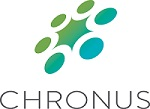ATD Blog
Best Practices for Implementing a Mentoring Program for Diverse Employees
Tue Feb 23 2021

In the world of diversity, equity, and inclusion (DE&I), initiatives and efforts can often feel like two steps forward and one step back as organizations struggle to find the right strategy to build more inclusive workplaces. But mentoring is one of the few strategies that research has proven to be effective in improving representation of diverse employees in the workforce while also providing an opportunity for organization connection and support.
To ensure your mentoring program is built for success, follow these best practices to reach and engage under-represented employees.
Determine Your Audience and Purpose
Mentoring for the sake of mentoring can leave your organization (and sometimes your employees) wondering what they’re getting out of it. Give yourself direction from the get-go. Understand what you’re looking to improve within your organization when it comes to DEI. Whether you’re looking to increase the number of women in management positions, improve the retention rate of Latinx employees, or increase the engagement score of LGBTQ employees, set a goal for the mentoring program and identify which members of the company this goal will serve. Determining these will help you identify which metrics you’ll follow to identify success.
Make the Program “Opt In”Mandatory diversity programs have been proven to produce less than desirable sentiments or even generate more bias. Instead, make your mentoring program voluntary. By having an optional program, the people who participate have a greater likelihood of active engagement and genuine interest in the program and its outcomes. To present that best case for voluntary participation, ensure the goals and benefits of the program are clearly communicated.
Recruit People
When it comes to successful mentoring programs, the if you build it, they will come approach will not deliver the results you want. To get people to enroll and engage in mentoring, you need to reach out and invite them to participate. This is especially important when it comes to encouraging under-represented employees to participate. Studies have shown that under-represented employees have difficulty finding or securing mentorship in informal settings. Reach out to the intended participants through internal communication tools, organization newsletters, social media, or even one-on-one conversations.
Don’t Make Diverse Employees Do All the Work
Diverse employees should be included in the design and launch of your program. If you’re implementing a mentoring program focused on advancing more black women to leadership positions yet don’t have a single black woman involved in the creation process, that’s a problem. Similarly, don’t rely on diverse employees to do all the work to get the program off the ground. Solicit buy-in and input from these employees to make the program more grounded in the truth of your organization, its employee structure, and the existing culture. This also applies to the mentor-mentee relationships. Give participants the tools, resources, and educational opportunities to understand demographic discrepancies in the workplace rather than assuming an under-represented employee (mentor or mentee) will be able or willing to unpack the entire historical relevance or importance of diversity in the workplace.
Match the Right Mentors and Mentees
Some companies prefer to match diverse employees with employees of a different background or demographic to build greater organizational empathy while expanding networks. For some organizations, mentees may want to be matched with a person of a similar background (mentors with the same identity) to find and establish community within an organization. Know what type of matching you’re looking to enable. If you’re unsure, refer to the overall goals of your DE&I mentoring program.
Train Participants
While the art of mentoring has been around for eons, the actual practice of it can seem elusive even to the best and brightest. Give your mentors and mentees a structure to follow when it comes to setting up meetings, creating goals, and setting up communication preferences. With a mentoring program focused on DE&I, it’s also important to prepare your participants for the possibility of sensitive discussion topics, such as racial unrest, how gender is recognized or dismissed in the workplace, or how employees are encouraged or discouraged to bring their full selves to the office (physically or virtually). To build a program that promotes and actualizes inclusion in workplace culture, participants need to be willing to openly discuss sensitive topics. It’s also important to train people about stereotypes and unconscious biases. This is how empathy is built, silos are torn down, and long-term value is built in the modern workforce.
Seek Feedback
The journey to a more DE&I-centric organization is not a quick or finite one. It will require trial and error, small wins, and some missteps along the way. Accept this and actively seek the feedback and commentary necessary to know how the mentoring program and the ensuing relationships are progressing. Seek feedback often to keep a pulse on where things are going right and where they are going wrong. Make the adjustments needed to fix any issues and keep moving toward your DE&I goals.
Be Sure to Measure
You’ll need to determine the overall outcomes you’re looking to achieve when it comes to building a more inclusive workplace culture. Once you’ve determined your goals, work backward to identify which metrics or key performance indicators will best represent your objectives. Putting numbers to your goals will help you better assess how the program is performing and whether you’re moving toward your goal and at what speed.
Mentoring is a powerful solution for organizations energized and committed to improving DE&I in the workplace. But before you jump straight into launching a program, ensure you’re reviewing these best practices to set up your program and your organization for optimal success.

